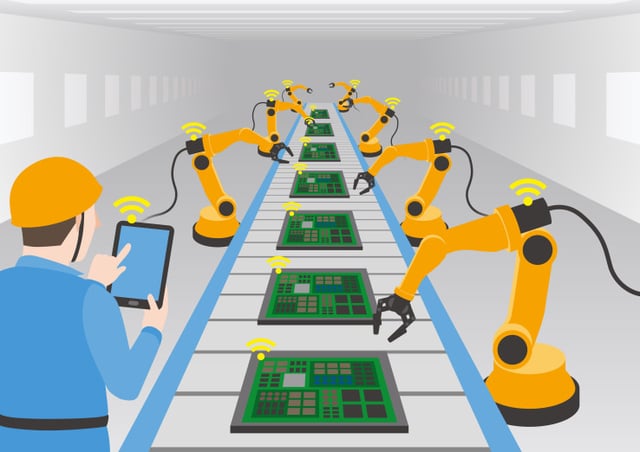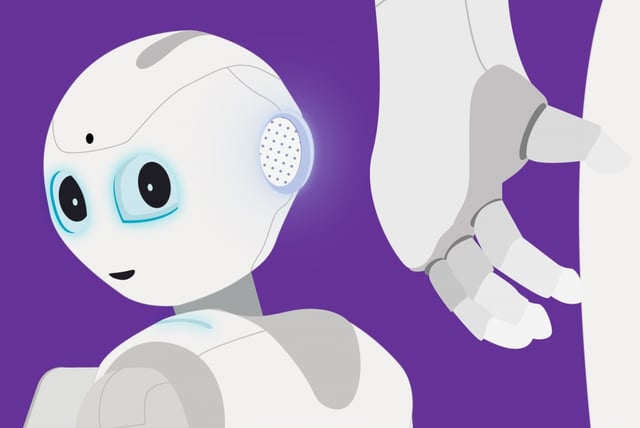What's New In Robotics This Week - Jan 22

Posted on Jan 22, 2016 7:00 AM. 6 min read time
Should we outsource emotional labor to robots?; Industrial robots changing our world; The human labor displacement debate; Cyborg spermbots; Humanoid robot design; Drone deliveries; Fukushima robot from Toshiba, and much more. Find out what's happening in the robotics universe this week. We select news that we hope will interest or amuse you. Enjoy!
Should We Outsource Emotional Labor to Robots? (Slate)
Robots are well understood as intelligent machines that can be used to supplement and replace human labor in factories and in the home. Few question the utility of robotics in these environments.
However, robots are also increasingly being used to provide what is known as "emotional labor" --"the requirement of a job that employees display required emotions toward customers or others". Think: a waiter's smile, a nurse's kindness, a teacher's patience.
In a fascinating opinion piece, Christine Rosen cautions against transferring emotional labor to robots, not least because it could inadvertently lead to a loss of emotional intelligence among humans:
If artificial intelligence develops as swiftly and powerfully as researchers such as Nick Bostrom predict, we might be dispatched swiftly not by Skynet-sponsored Terminators but by an army of snuggly therapy bots; our A.I. overlords could look more like Oprah than HAL.
Outsourcing emotional labor has other more immediate consequences. What happens when we know that someone is faking a feeling? We might sense implicitly that our overworked waiter isn’t actually happy to see us when we sit down at his table, but unspoken social conventions allow us to make as much of a pretense of believing his feelings as the waiter does of performing them.
But when we interact with robots that we know have been programmed to give everyone the same friendly greeting regardless of anyone’s actual feelings, that unspoken compact disappears. Even if social robots become more skilled at expressing a fuller range of human emotion (like “Nadine,” who uses Siri-like technology and can express anger as well as happiness and sadness), we risk doing to expressions of social feeling what Muzak has done to music—homogenizing it to the point that it becomes nearly unrecognizable.
AUTONOMOUS ROBOTS ARE CHANGING THE WAY WE BUILD AND MOVE PRODUCTS AROUND THE WORLD (TECHCRUNCH)
Beyond amazing developments within robotics, we need to recognize the equally significant advancements in machine vision that are driving the vast applications transforming industries today. Vision guided vehicles (VGVs) are becoming more necessary to transport heavy loads autonomously and ensure two-day, next-day and same-day deliveries. We’re seeing deployment of VGVs throughout manufacturing and advanced fulfillment facilities across multiple industries, including automotive, industrial product development and retail.
Steerable, Motorized Cyborg Spermbots Take on Infertility (IEEE Spectrum)
Researchers from the Institute for Integrative Nanosciences at IFW Dresden in Germany have successfully tested tiny, magnetically-driven power suits for individual sperm that can turn them into steerable cyborg “spermbots” that can be remote controlled all the way to the egg:
The motors are metal-coated polymer microhelices that are sized such that they’ll fit over the tail of an individual sperm. A rotating magnetic field causes them to spin, propelling them (and whatever sperm they’re attached to) forward. Adjusting the orientation of the field can steer the spermbots in 3D, and all of this stuff can be done inside of an MRI machine, although the video (and testing so far) has been in the equivalent to a Petri dish. Once the (presumably now very very dizzy) sperm reaches the egg, the micromotor can even plow them into it, making the fertilization process as easy as possible.
Report from Davos: 5 million jobs to be lost by 2020 because of tech advances (SiliconBeat)
Not that this report is a particularly egregious example, but the debate around human labor replacement is set to heat up over the next few years, buoyed by reports of large scale employment disruption caused by robotics and AI.
Unfortunately, like many debates, it often descends into simplistic 'either/or' territory in which only one 'side' wins or loses --in this case, the humans or the robots.
In this sense, an "either/or" debate does not reflect reality --that humans and robots are collaborating more than ever, often with great benefit to the human worker.
Robotics and AI will cause disruption, so managing human labor displacement is an important issue for the robotics industry in general.
However, it seems to me that the conversation would benefit from being a little less 'either-or' and more reflective of the vision of human-robot collaboration that drives many robotics companies.
Davos' recent report includes robotics and AI among several technologies (3-D printing and biotech advances are others) set to disrupt our world:
The World Economic Forum, which is holding its annual meeting in Davos this week, in its report details the effects of modern technology on the labor market, for better or for worse. It says “the fourth industrial revolution” will be “more comprehensive and all-encompassing than anything we have ever seen”.
The report actually estimates a loss of 7 million jobs in 15 economies that today have 1.86 billion workers, or about 65 percent of the world’s workforce, but it also expects 2 million new jobs to be created [emphasis mine].
Designing a Non-Creepy Humanoid Robot Is a Delicate Affair (PSFK)
We locked eyes—Pepper’s glimmered blue in recognition. “Bump it bro,” I said to its head, and it rolled up its five fingers into a fist, reached out toward me, and we pounded it.
I met Aldebaran’s humanoid robot Pepper at CES this year to find out if a machine could really delight me enough to convince me to live with it.
Robopocalypse Now!
To the robopocalyptic thinker --and some tabloid headline writers-- no conversation about robotics is complete until they have expressed fear and trembling. And it doesn't matter how competent or useful the robot is or how well it performs its tasks.
It happens so often that you have to wonder how real the fear is and whether, for some, it is just a bit of whimsical theatrics.
Case in point:
Google 'humanoid' robot to eliminate housework forever - but he's absolutely terrifying (Mirror)
Robot invasion (Lawyer's Weekly)
"Law firms can choose to either reject or embrace artificial intelligence – but ready or not, the tech revolution has arrived."
And Finally...
Werner Herzog's New Documentary Is About AI And Robotics, Looks Incredible (Popular Science)
Humanoid robot ready to befriend your lonely kid (The Times of India)
Saab To Provide UAV Systems to Swedish Police (UST)
Biopsy robot combines MRI and ultrasound (AlphaGalileo)
Russia's War Robots Are Less Than They Appear (Popular Science)
The Pitch: RoboKind's humanoid robot generates $500K, interest in first four months (Dallas Business Journal)
Amazon Exec: Prime Air Drones Will Be “More Like Horses Than Cars” (Consumerist)
What's really standing in the way of drone delivery? (The Verge)










Leave a comment